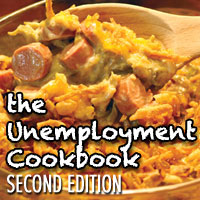There’s a movie coming out soon. A new teen movie. A new angst-ridden, teen movie.
Based on the angst-ridden, teen novel of the same title.
The Perks of Being a Wallflower.
Apparently, this book comes highly recommended for the teen scene. The popularity of the movie’s female lead, Emma Watson, stems from her long-running popularity as Hermione in the Harry Potter films.
The movie is rated PG-13. That’s to be expected: any teen movie should have themes above the G-rated crowd. But in reading reviews of the book, I’m surprised it’s not rated R.
Dot’s been asking to buy the book, so I did my parental due diligence and Googled reviews everywhere I could find them: Amazon, Barnes & Noble, blog posts… everywhere.
The overwhelming support of the book has me a bit befuddled. I always read the very negative reviews first, and then read the positives. Nearly every negative review read the same: This is not how teens act or speak. This was obviously written by an adult pretending to be a teenager. It was disjointed and hard to follow. Very surfacy. Not a lot of depth.
Now, I can understand some critical reviews are harsh, and I’m willing to put up with bad writing for the sake of learning what not to do.
But the more I read, the more appalled I became at what passes for a “remarkable” story of “high school life”. And I decided to peruse the book myself to make sure I wasn’t overreacting.
By Page 21, I cited too many innuendo and descriptions (and yes, bad writing), to expose my daughter to such material. I prefer not to rehash it here out of respect for my mother who reads my posts, and for others who feel the same way.
You can’t unring a bell, and I certainly don’t need my 17-year-old daughter’s bell rung in such a blatant, sexual manner.
Whatever happened to the fascinating, gripping, wonderful storytelling of old? Dickens, Jules Verne, Arthur Conan Doyle. Certainly, even with some suggestion of Sherlock Holmes’ drug use, it wasn’t blatant or casual. And he suffered consequences.
Apparently, to be a successful Young Adult writer, you just need a gutteral mindset and a few cuss words.
To be fair, I had heard that the ending makes it all better. That the conclusion of the book has a great message. But does that make it okay to expose our young readers to such material in hopes that they won’t be affected by it, because, after all, it’s the end result that matters? If that’s so, they why is society always saying things like, “It’s not the destination, it’s the journey…”
It reminds me of the Brownie Parable:
Children were imploring their father for permission to see a movie rated PG-13. They gave him their best reasons: their favorite actors were in it. Everyone else was seeing it, even some church members. It was only rated PG-13 for a few little things: The suggestion of sex (just innuendo, nothing was really shown). The language wasn’t that bad (only a few curses, and just a few misuses of the Lord’s name). The special effects were amazing (a building full of people were blown up, but only one building). After listening patiently to their pleas and reasonings, the father simply said, “No,” without an explanation. The children kept asking. The father simply kept saying, “No.”
Later that same day, the father offered his children some special brownies. “What makes them special?” They wanted to know. He matter-of-factly replied he’d added dog poo. But just a tiny, tiny bit. The rest of the ingredients were exactly as the recipe specified, and the brownies had been otherwise perfectly prepared.
The children refused to eat the brownies. Their father pretended to be shocked. After all, these were their Grandmother’s recipe, with that one small, minimal addition. How could such a small bit affect the whole? They would never really notice. Still, the children refused.
The father set the brownies aside. He told his children the movie they wanted to see was the same as the brownies. They wanted him to believe that just a little bit of wrong-ness wouldn’t affect them; that the ending justified the means. With the brownies as an example, they were able to see how even just a little bit of dog poo can ruin something great. The father further told them that Satan tries to enter our minds and homes by deceiving us in just this way, by telling us “just a little” won’t hurt us.
He asked his children why they won’t compromise eating a brownie, but they’d compromise what they accept as “entertainment”? The children had no answer. But they never asked again.
The movie will be rated PG-13 by the MPAA: “Rated PG-13 on appeal for mature thematic material, drug and alcohol use, sexual content including references, and a fight – all involving teens”.
After many notes on IMDb.com about the book’s content, there was this disclaimer:
“NOTE: All of this will most likely be toned down (and I’m assuming some will be removed from the movie) due to the PG-13 rating.
Stephen Chbosky (screenwriter/author/director) also said he was trying to focus less on the sex aspect when it came to the movie.”
My question is: If the novel is too graphic for the PG-13 crowd to watch, what makes it okay for them to read?
Now, I’ve had all “the Talks” with Dot that a Mom’s supposed to have. We talk about drinking, drugs, sex, good behavior and rewards, bad behavior and consequences, questions, differences of opinions vs. Right or Wrong, what Society expects of her compared to what her family expects of her… and many other topics. Dot and I talk. A lot. And for that I’m thankful.
Because when she asks if she can read this book, she trusts I have a good reason for disappointing her when I say, “No.” I just can’t expose my teen daughter to a world where dog poo is an acceptable ingredient.
And Frankly, My Dear… that’s all she wrote!









Frankly, Molly, I understand where you are coming from where you don’t want to expose Hannah to anything, but I personally think you are wrong. She’s almost 18. She is in college. No matter what, she will be exposed to these things. I’ve read this book and it’s good. Whatever reviews you are reading that say this is not how teenagers work, isn’t true; because it is. There is a difference, if your child is ten and wants to read it, but this isn’t the case. The movie is PG-13, and by that standard a seventeen year old should be able to read and see the movie. Also, I suggested the title to her, even before the movie trailer started coming out.
Thanks, Nathan. I honestly appreciate this feedback and will definitely take it into consideration. She doesn’t want me to read the book before she does, so I had to make the decision based on the little information that I’ve heard and read myself at the store. I wasn’t happy with Page 21. I agree she’ll be exposed to it, but as a parent I need to set some ground rules.
Molly Jo recently posted..Dot is not a “Wallflower” Kind of Girl